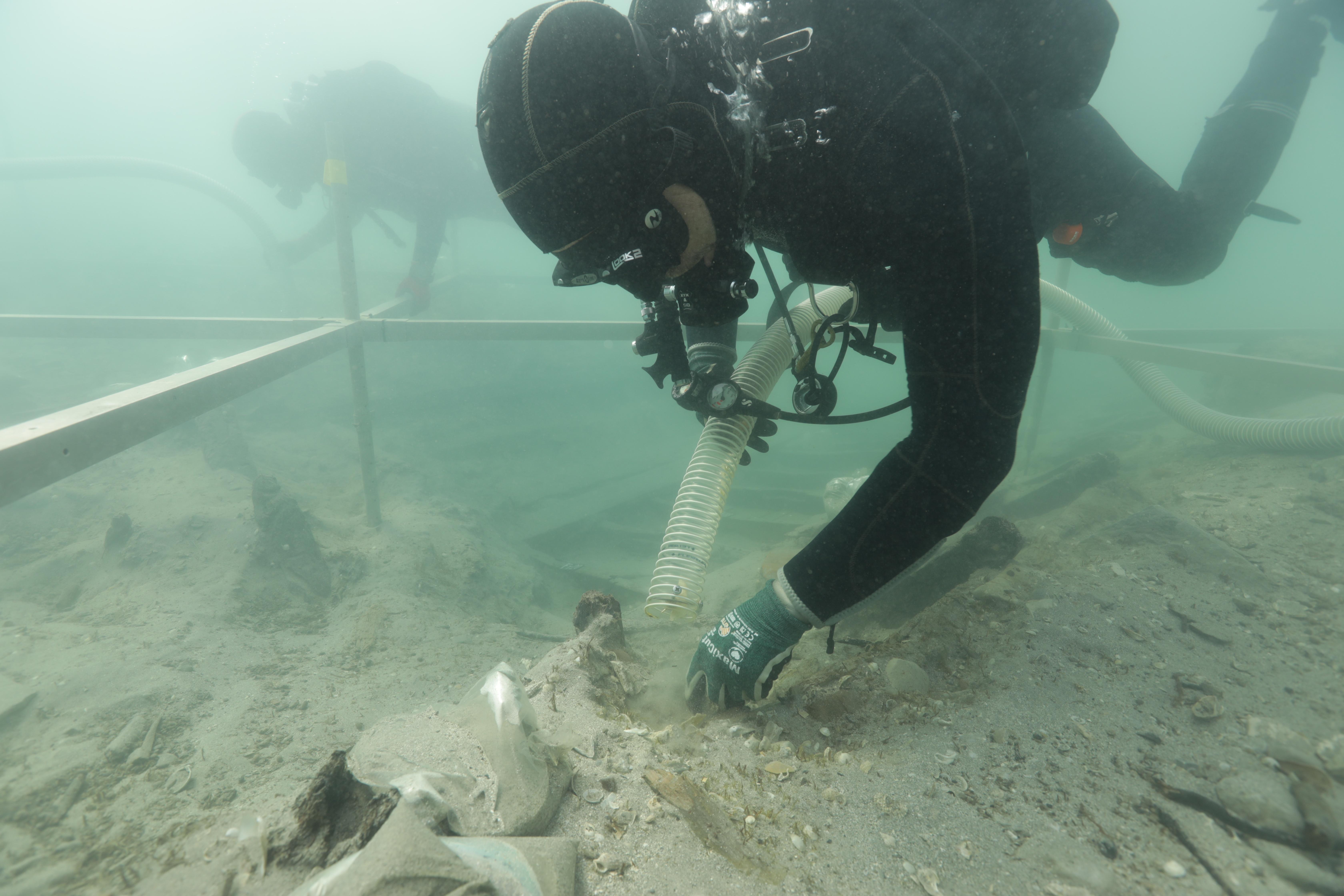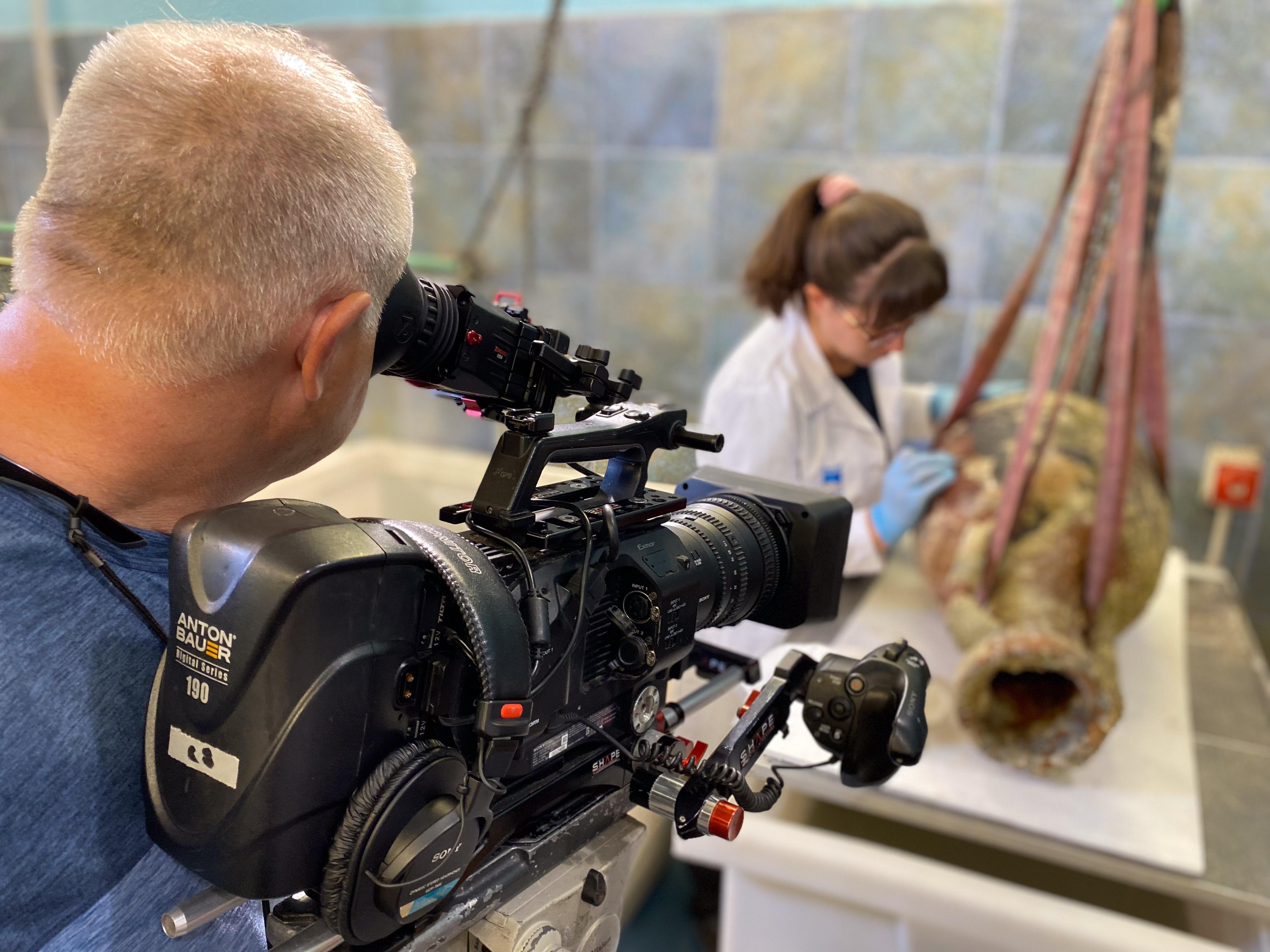Episode 1601: Ancient Adriatic: Croatia's Sunken History
Join archaeologists and conservators along Croatia’s Dalmatian Coast as they uncover and meticulously document the submerged remains of a Roman ship in the ancient harbor of Barbir. Preserved in sediment for nearly 2,000 years, the ship's wooden hull provides experts at the International Centre for Underwater Archaeology in Zadar with invaluable insights into the ship’s origin, offering a rare glimpse into the region’s maritime history and cultural heritage. Recovered artifacts from the archaeological site, including pottery sherds, fishing weights, and Roman coins, are carefully conserved at the Centre, ensuring the preservation of their captivating stories for future generations. With specialized care, conservators delicately tend to each piece of history, so that archeologists and historians may shed light on ancient trade and daily life during the Roman era in Croatia.
Experts
Meet the experts featured in this episode.

Changing Seas

© International Centre for Underwater Archaeology in Zadar

Changing Seas

Changing Seas

Changing Seas

Changing Seas

Changing Seas

Changing Seas

Changing Seas

Changing Seas

Changing Seas

Changing Seas

Changing Seas

Changing Seas

Changing Seas

© International Centre for Underwater Archaeology in Zadar

Changing Seas

Changing Seas

Changing Seas

Changing Seas

Changing Seas

Changing Seas

Changing Seas

Changing Seas

Changing Seas

Changing Seas

Changing Seas

Changing Seas
Special Thanks:
ZADAR SUB
Ul. Borka Šarlije Kese 22, 23000,
Zadar, Croatia
+385 23 214 848
Diving Center Foka
Camping Village Šimuni, 104, Otok Pag, Croatia
00385 (0)91 530 2072
Image Credits
Changing Seas would like to thank the following individuals and institutions who kindly allowed their footage, images and other media to be used in this production:
Roko Surić
International Centre for Underwater Archaeology in Zadar
Special Thanks:
Doris Kurtov, Luka Bratović, Antonija Jozić,
Martina Ćurković Madiraca, Šime Vrkić
International Centre for Underwater Archaeology in Zadar
Ida Koncani Uhač, Ph.D.
Archaeological Museum of Istria
Roman Scholz, Victoria Holze
Romano-Germanic Commission
German Archaeological Institute
Mateusz Popek
Nicolaus Copernicus University
Duranka Ladislav
Cristina San Martín Bel
Asimina Porrou
Pedro Albarracín
Saša Stipanić
ZADAR SUB
Vedran Dorušić
Diving Center Foka
Morana Vuković
Archaeology Museum of Zadar
Hrvoje Manenica
Museum of Ancient Glass Zadar
Patricia Smith
Web Extras
Funding for this episode of Changing Seas was provided by:








